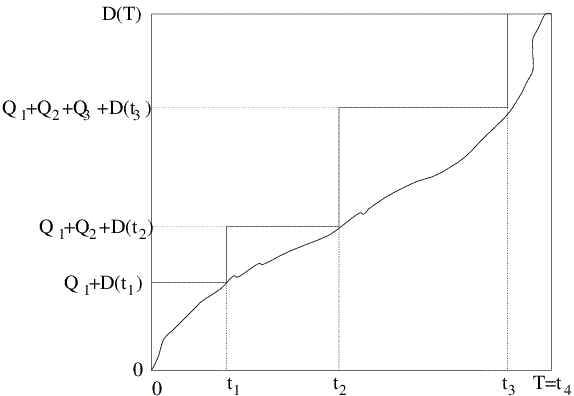



Siguiente: Modelo 5
Nivel anterior: Modelos de inventario con revisión continua
Previa: Modelo 3
- Demanda: d(t),
![$t \in [0,T]$](img687.gif) .
.
- Escasez no permitida.
- Coste de mantenimiento: h.
- Coste de pedido: k.
- Horizonte de planificación: [0,T].
- Número de pedidos: n.
- Política: determinar los instantes
 en que se deben realizar los pedidos.
en que se deben realizar los pedidos.
Sea
 la demanda acumulada hasta el
instante t. Como el número de pedidos es fijo, el único coste
será el de inventario. Como h es constante, basta minimizar el
nivel de inventario acumulado.
la demanda acumulada hasta el
instante t. Como el número de pedidos es fijo, el único coste
será el de inventario. Como h es constante, basta minimizar el
nivel de inventario acumulado.
El nivel de inventario en el instante t es
y(t) = D(tk+1)- D(t)
si
![$t\in [y_k,t_{k+1}]$](img690.gif) .
Veamos un modo de aproximar la solución.
.
Veamos un modo de aproximar la solución.
Sean
 fijos. Si
fijos. Si
![$t \in [t_{k-1},t_{k+1}]$](img692.gif) ,
entonces
,
entonces
Derivando respecto de tk:
D(tk+1) = D(tk) + d(tk)(tk - tk-1).
Luego fijando t1, se obtienen todos los demás puntos. Ahora
bien, no necesariamente se tiene T=tn.

